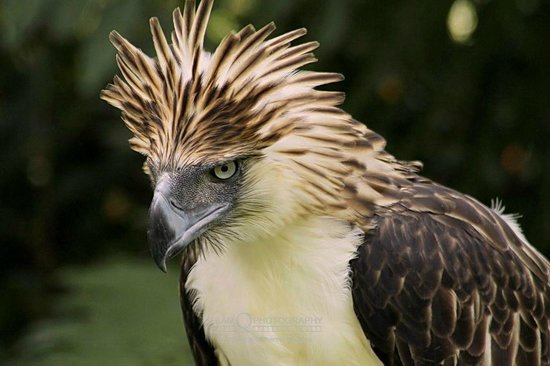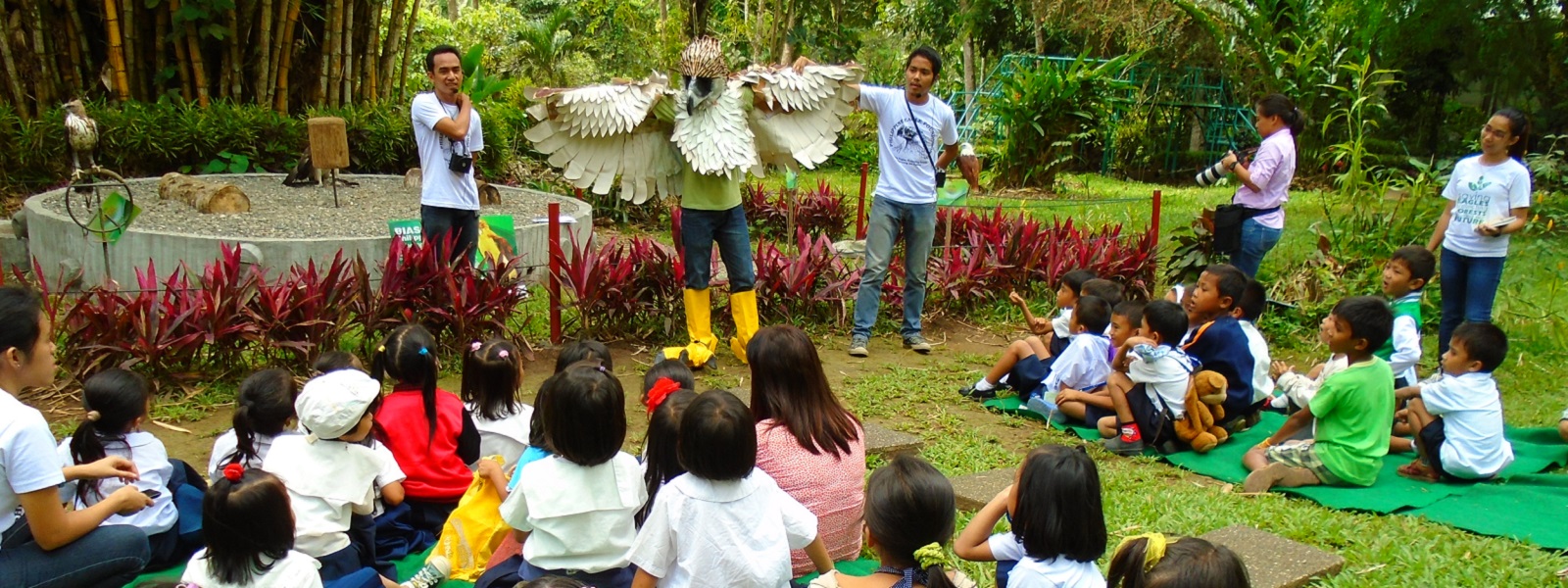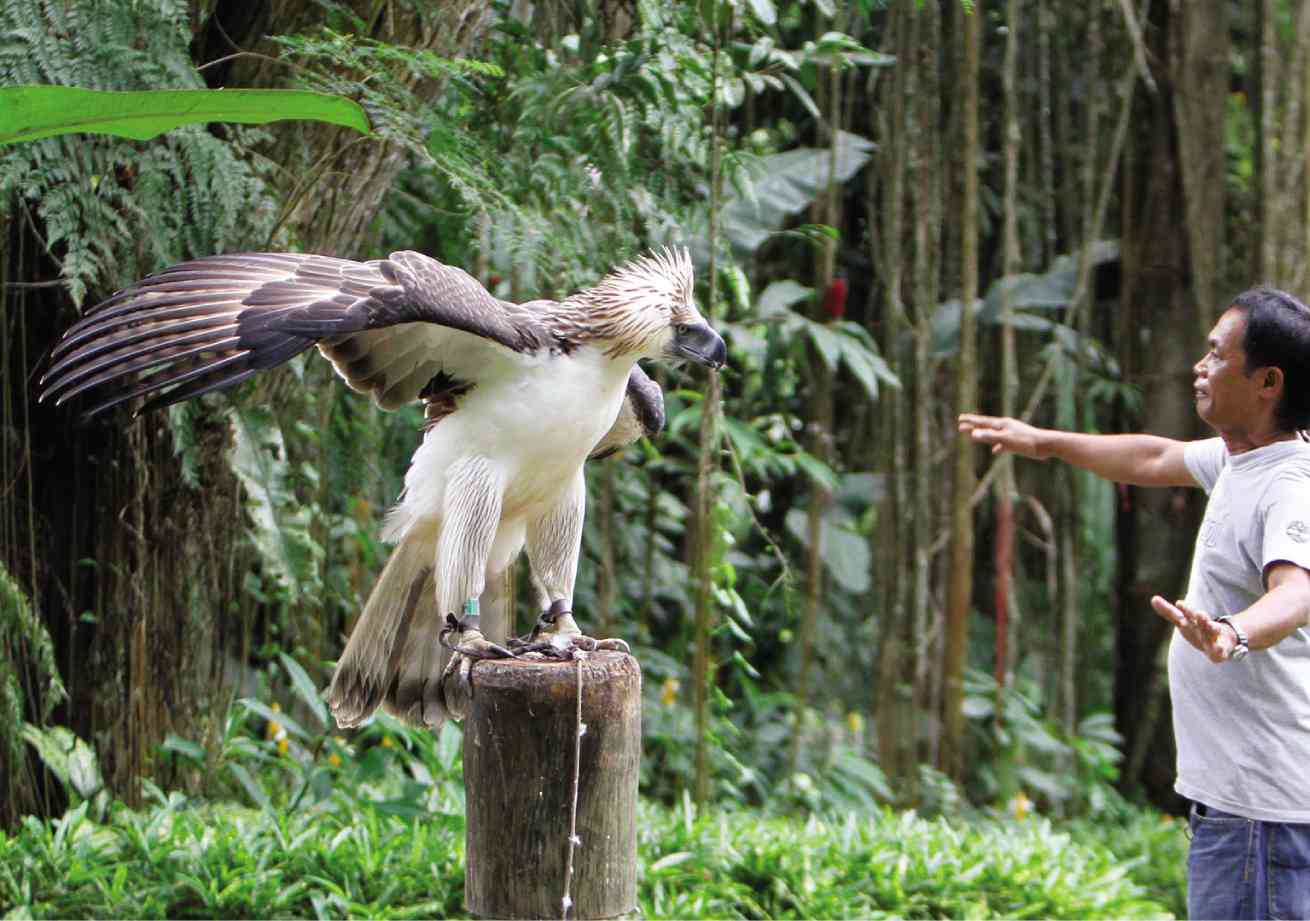The great Philippine eagle is considered to be one of the most glorious birds on the planet. Being the national bird of Philippine, it is the largest of the extant eagles in the world in terms of length and wing surface. But chances are that you have never ever heard about them. One of the possible reason for that could be because they are critically endangered with only about 400 left in the wild.
Philippine Eagle Foundation is a non-profit organization, established in 1987, dedicated to the protection and conservation of the Philippine eagle and its forest habitat. This organization in Philippines is doing whatever possible to recover their dwindling population. That includes conserving their natural habitat, forest to feeding the eaglets dressed as eagle puppets so as to avoid them becoming habituated to Humans. That way it would be easier for the newborns to adapt to the wild and natural habitat.
It’s Not a ‘Little’ Bird..

These magnificent birds are the largest eagles and also called monkey-eating eagle because it was believed to feed exclusively on monkeys which is not the case. They are opportunists and takes prey based on its local level of abundance and ease. Their diet includes monkeys, birds, flying foxes, snakes, and lizards etc.
They are amongst the rarest and most powerful birds in the world and endemic to the Philippines and four major islands: eastern Luzon, Samar, Leyte, and Mindanao.
Like most eagles, the Philippine eagle is monogamous. Once paired, a couple remains together for the rest of their lives. If one dies, the remaining eagle often searches for a new mate to replace the one lost.
The main reason for the fall in the population of Philippine eagles is deforestation along with poaching (which is illegal in the country and if caught, a punishment of up to 12 years imprisonment and heavy fines are applicable) and accidental trappings.
Philippine Eagles require quite a large home range in order to successfully raise a chick to fledge age, deforestation, of course, has an extremely negative impact on the Eagles ability to find food to feed their young, this issue is only exacerbated as breeding pairs are forced in to territorial overlap, the increased competition for food in a consistently decreasing range results in an exponential rise in the likelihood of a juvenile Eagle dying within the first year of its life.
Philippine Eagle Foundation

The foundation focuses heavily on field research, education and conservative breeding projects. Their Philippine Eagle centre, which is an 8.4 Hectare area located at the foothills of Mt. Apo in Malagos, Baguio District, Davao City and situated within the Malagos Watershed, is focused on the captive breeding and eventual release of mature animals into the wild and began successfully breeding the Eagles in the early 2000’s.
Since then over 30 Eagles have been born at the center, the foundation was also the first organization to experiment the release of captive-bred Eagles to the wild, an experiment that met mixed results as the two released specimens died, one from accidental electrocution, the other from illegal poaching.
So far, the PEF has produced 25 captive-bred Philippine Eagles which will be either released into the wild or kept in the PEC for breeding purposes. The program also involves giving aid to injured Philippine Eagles recovered from the wild.
PEF focuses on natural breeding and pairing of Philippine Eagles whenever possible but also employs cooperative artificial insemination whenever necessary.
Other than supporting reproduction of the Philippine Eagles, the PEF also helps to incubate, foster and hand-rear the chicks.
Their mission statement is “The Philippine Eagle Foundation firmly believes that the fate of our vanishing Philippine Eagle, the health of our environment, and the quality of Philippine life are inextricably linked. We are therefore committed to promoting the survival of the Philippine Eagle, the biodiversity it represents, and the sustainable use of our forest resources for future generations to enjoy.”
Their efforts to save the forests not only helps the Philippine eagles but also provide a home to many other animals and also help in fulfilling the dreams and aspirations of the millions of marginal income families who also rely on the forest to survive.

The organization has a very dedicated staff. After establishment in 1987, the staff waived their salaries for over a year in order to feed the eagles and continued to do the fieldwork.
The dedication and effort invested in this work eventually paid off. In 1992, the Foundation successfully produced the first two Philippine Eagles bred and hatched in captivity. The birth of Pag-asa (Hope) and Pagkakaisa (Unity) caught the world’s attention and eventually led to the subsequent outpouring of public support and sympathy that helped revitalize the effort to save the species.
Apart from fieldwork, the foundation also engages in research and community-based efforts for on-site protection, and most importantly, public education to save the Great Philippine eagle. The PEF’s conservation education program targets urban and rural communities in order to develop public awareness and understanding of wildlife conservation issues.
PEF has initiated and collaborated in several conservation projects that either target the conservation of the Philippine Eagle itself or its important forest habitat. These projects include reconnecting forest fragments, habitat management and protection, watershed management and much more.
The efforts by these people in order to save a species is laudable. The positive impact their conservation program is creating should be supported and appreciated. They are trying to undo the damage humans have done through ages now. Maybe not all hope is lost if we are willing to save what we value at all costs!

